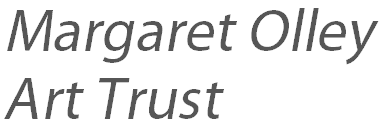A bookplate, also known as ex-librīs [Latin “from the books of…”], is usually a small printed or decorative label pasted into a book, often on the inside front cover, to indicate its owner.
A bookplate typically bears a name, motto, coat of arms or any motif that relates to the owner of the book, or is requested from the artist or designer. The name of the owner usually follows an inscription such as “from the books of…” or “from the library of…”, or in Latin, ex libris…. Bookplates are important evidence for establishing the ownership of rare books.
The earliest known examples of printed bookplates are German, and date from the 15th century. Albrecht Durer, Hans Holbein and many European artists designed bookplates. Similarly, a number of well known Australian artists have produced personal bookplates for collectors and friends.
Bookplates can be more valuable than the odd volume in which they are found, either as specimens of bygone decorative fashion or as personal relics of well-known people.
Some collectors of bookplates attempt to acquire plates of all kinds; others concentrate on bookplates in special fields—for example, coats of arms, pictures of ships, erotic plates, chess pieces, legal symbols, scientific instruments, signed plates, proof-plates, dated plates, plates of celebrities, or designs by certain artists. Collectors fall into two main groups, those for whom the study of bookplates spanning 500 years is a fascinating source of historical, artistic and socio-cultural interest; and those whose collections enable building a miniature, personalized art-print collection. Bookplates can be commissioned as numbered and signed editions which are never pasted into books but only serve for exchange purposes.
Societies of bookplate collectors were founded in England in 1891, and later in Germany, France, and the United States, most issuing a journal. In Australia, The Australian Ex Libris Society produced a journal, yearbook and selected publications from 1923 until 1939. Percy Neville Barnett was an early president, and his attention to detail is evident in his published works. In 2006 the New Australian Bookplate Society was launched which produces an quarterly newsletter whose back issues are available at the Society website: (http://www.bookplatesociety.org.au ) More than fifty societies of ex-libris collectors exist world-wide, grouped into an International Federation of Ex-libris Societies (FISAE) which organizes worldwide congresses every two years.
One of Australia’s best known bookplate designers was artist Adrian Feint. Howard Hinton commissioned him to design a personal bookplate, and a bookplate for the books donated to the Armidale Teacher’s College. Feint also designed bookplates for a number of well known Australian artists including Thea Proctor.
Sylvia Ransom, honorary librarian, NERAM
Image: Adrian Feint Bookplate for Howard Hinton, Armidale Teachers College n.d. Wood engraving in coloured ink. The Howard Hinton Collection
Sources:
“Bookplate” (last modified 2 May 2020) Wikipedia from http://en.wikipedia.org/wiki/Bookplate 12 May 2020.
The New Australian Bookplate Society (December 2014) “Introduction to Bookplates and the Society” from http://www.bookplatesociety.org.au 12 May 2020.
__________________ (March 2018) “Inside the Cover: patron and artist. The bookplates of Adrian Feint” Newsletter. New Australian Bookplate Society no. 48, pp. 4-5 12 May 2020.
Holroyd, J.P. “Barnett, Percy Neville (1881–1953)”, Australian Dictionary of Biography, National Centre of Biography, Australian National University, http://adb.anu.edu.au/biography/barnett-percy-neville-5140/text8603, published first in hardcopy 1979, accessed online 12 May 2020.
International Federation of Ex-libris Societies (FISAE) “Home page” from http://www.fisae.org/indexSub02.html 4 February 2015.




